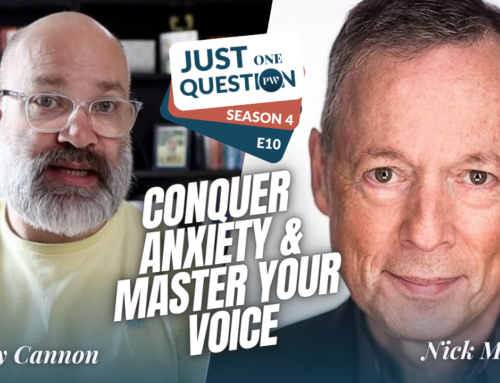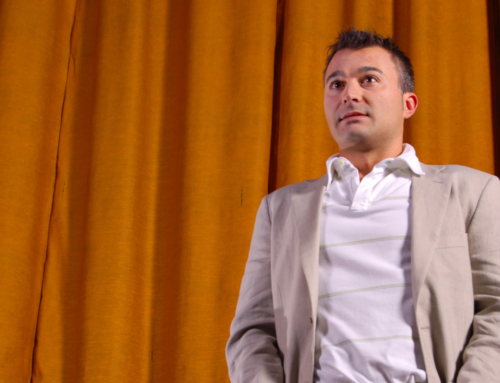As I said in my last blog, modern presentations are doomed to failure because of ancient survival instincts. Your body goes into flight or fight mode, and your audience responds similarly, thanks to mirror neurons. Communication breaks down. You sense that things are not going well, and you panic more completely. The audience responds with panic back. What can you do to avoid that doom loop?
You need to control the many little signals of tension your body is sending out to the audience. There are two ways to accomplish this feat. The first is to control your gestures, and the second is to control your emotions.
Control your gestures. This is hard work for most of us. We learn as adults to control our faces reasonably well, smiling when we really want to punch someone, for example, and generally putting on a happy face when we don’t mean it. But controlling the rest of the body is difficult because it is normally done by our unconscious minds. It’s very hard to bring it to the conscious level, since our conscious minds are much more limited in power. We can only process something like 40 bits of information a second with our conscious minds while our unconscious minds can handle 11 million bits of information. No contest.
Nonetheless, you can learn to do it, by practicing daily, and by learning your speech very, very well so that you can free up as much of your conscious mind as possible. Start by observing how you stand, move, and gesture when you’re relaxed, and then practice doing that for your presentation. After that, it’s repetition.
Control your emotions. Surprisingly, perhaps, this is the easier – and usually more successful – way to go about showing up as a confident speaker. We tend to think about emotions that they are uncontrollable, but you can get yourself into a positive, enthusiastic state of mind by some simple self-talk. After that, it’s just a matter of practicing that positive self-talk rigorously before the presentation, and then invoking it just before you start.
Here’s how to do it. Think of a time when you were genuinely in the frame of mind you desire to show up with at your presentation. If you want to be positive, high-energy, and excited, then think of a time when you felt that way. Perhaps when you won the bowling trophy, or your first Senate campaign? Then practice recalling that specific state of mind, using the entire power of your memory through the five senses. What did that moment smell, feel, sound, look, and taste like? The more concretely you can recall it, the more emotion you will invoke. Practice that for several weeks before your presentation, and it should soon become automatic.
If you’re in the right frame of mind, your gestures will take care of themselves. And you will avoid the doom of most presenters, engaging rather than alarming your audience.








Thanks for the post. Do you have examples of negative gestures? I know I’ve done things like swaying slightly back and forth or maybe tilting my head oddly, but those seem like whole body movements rather than gestures with hands.
Most of the ‘negative (hand) gestures’ have to do with self-protection — closing off your torso in order to protect from the audience. Happy feet — wandering the stage because of an excess of adrenaline — is another one.